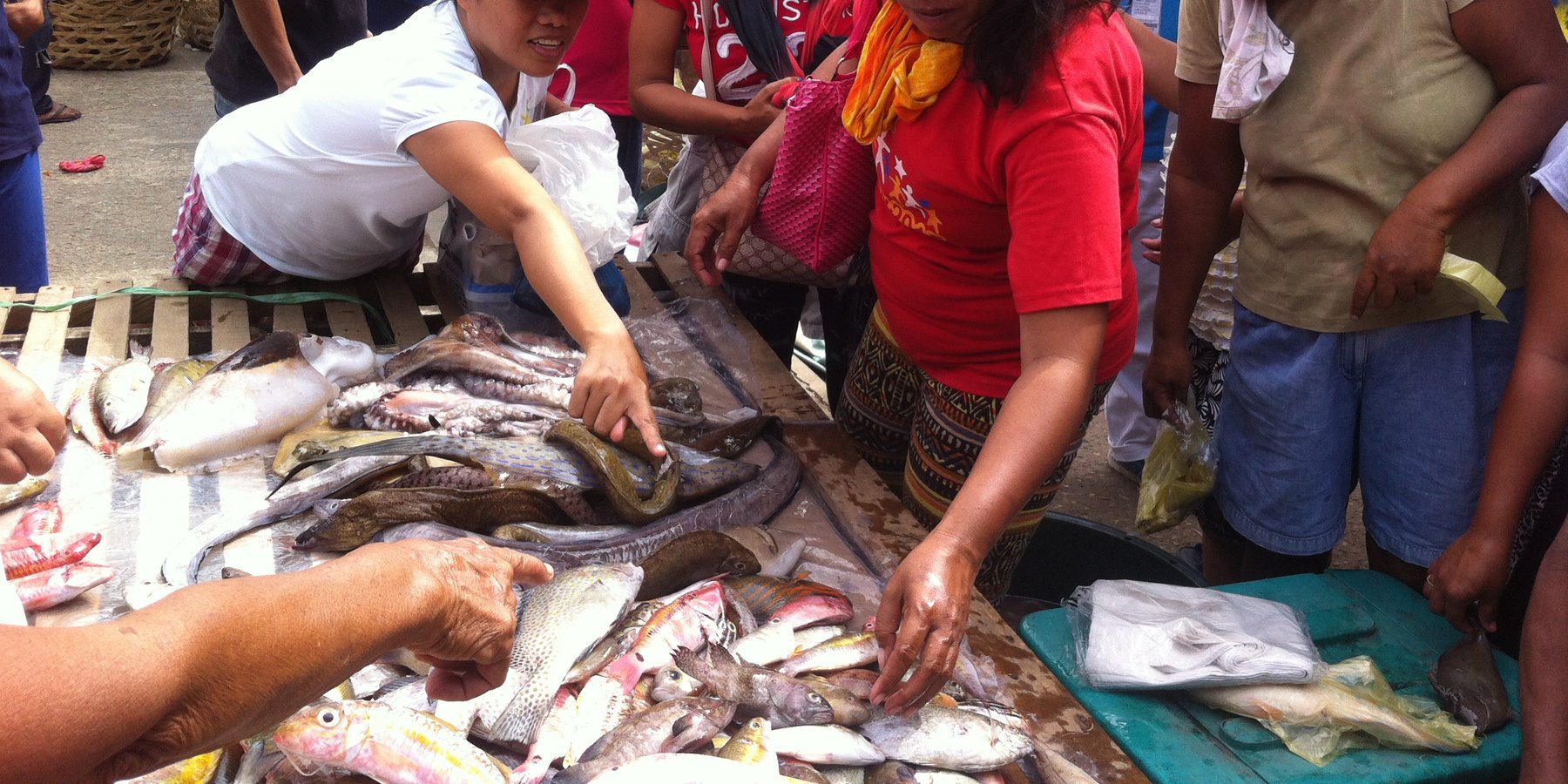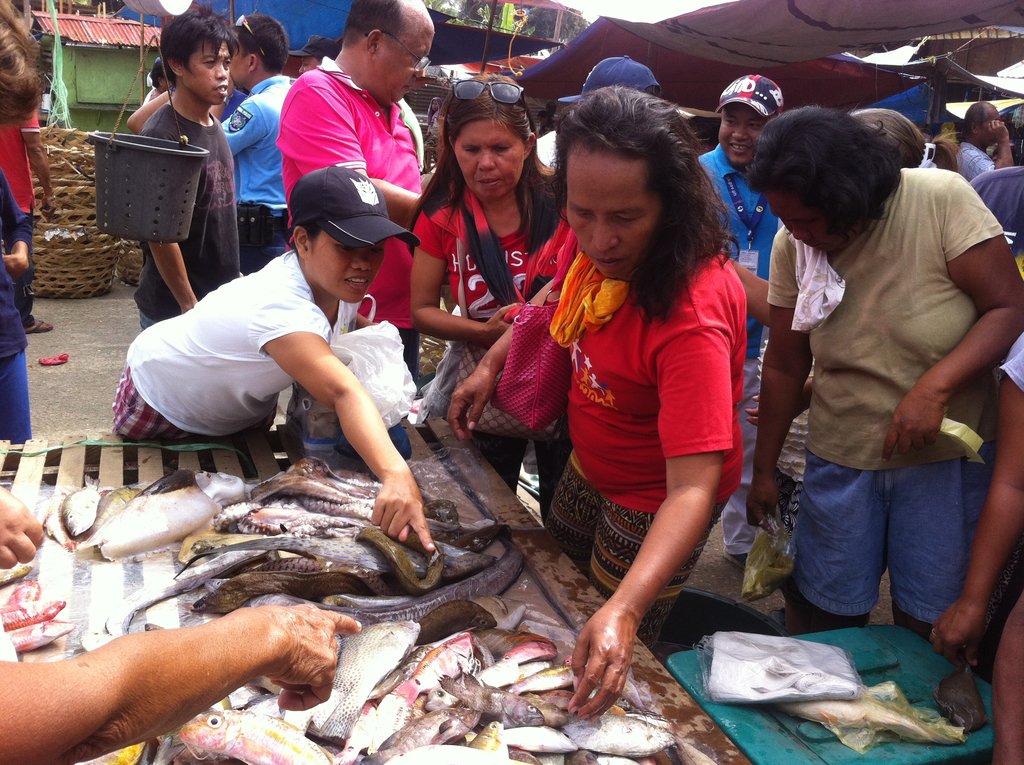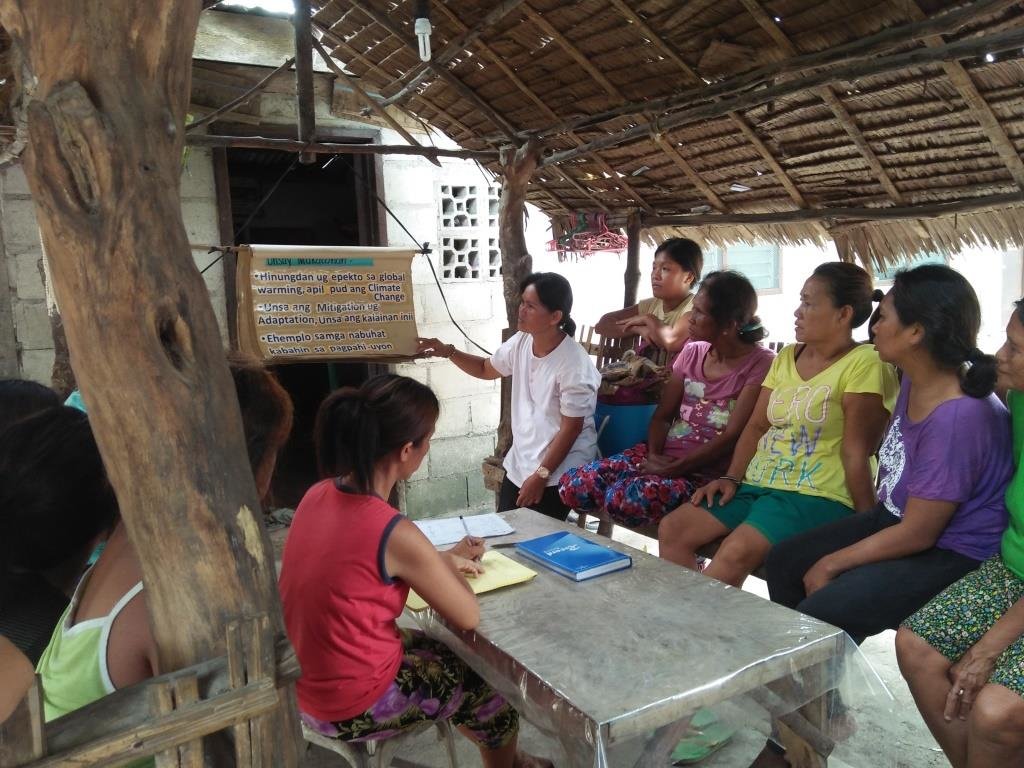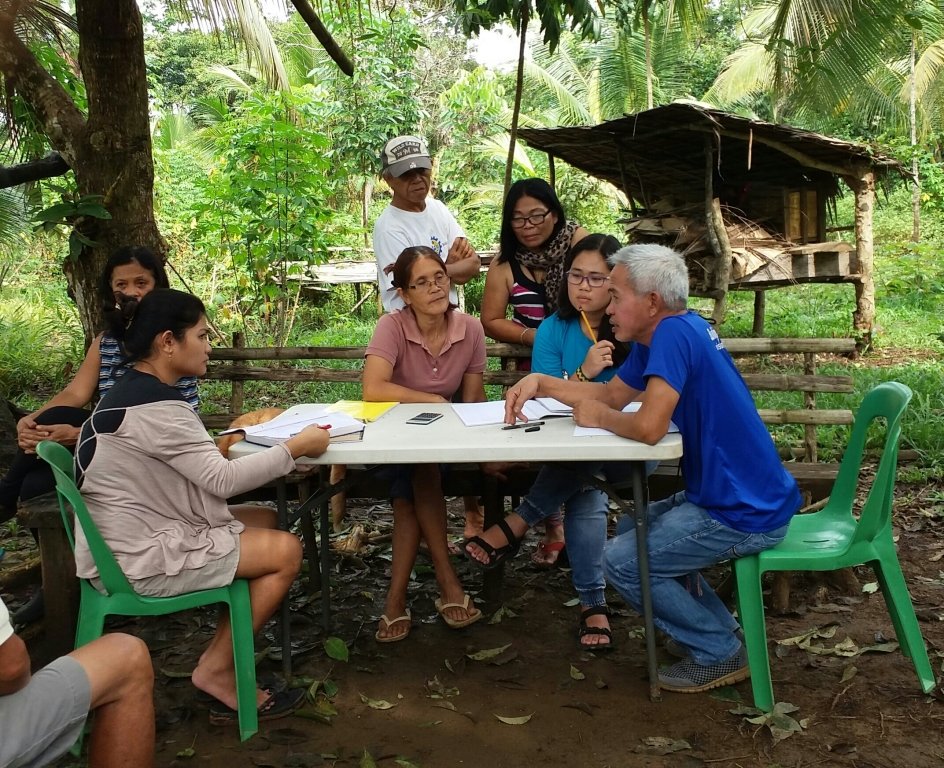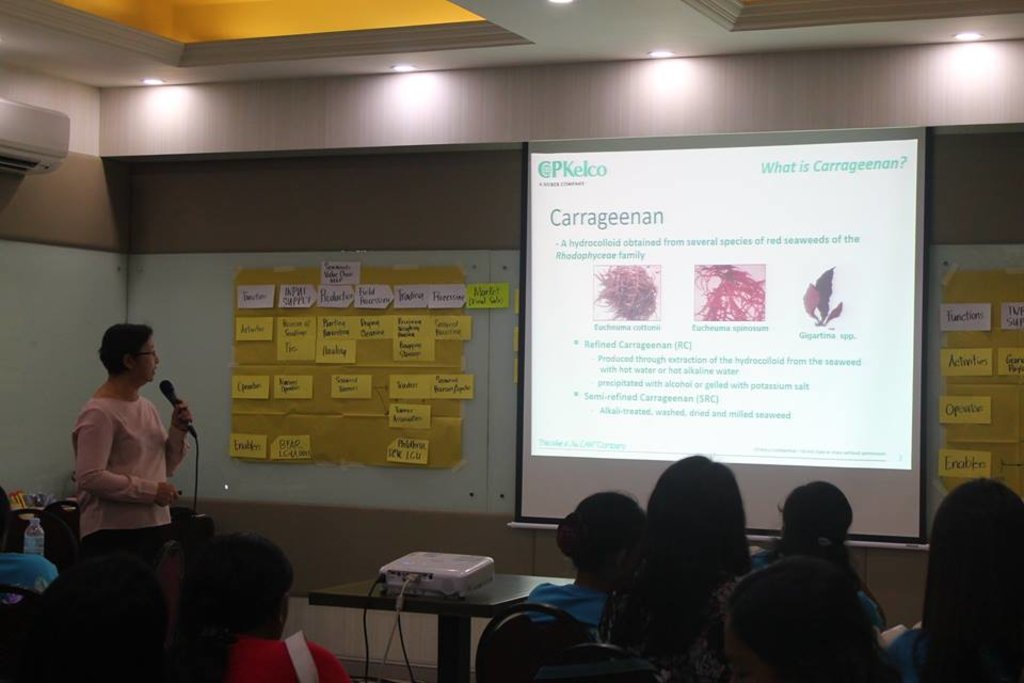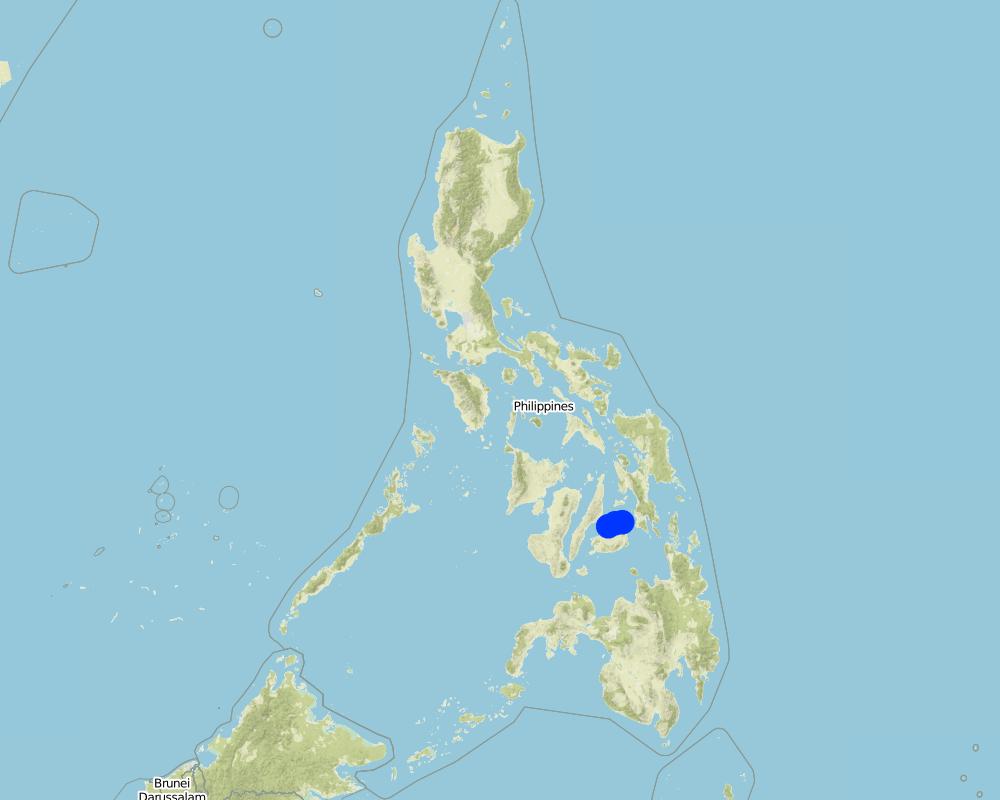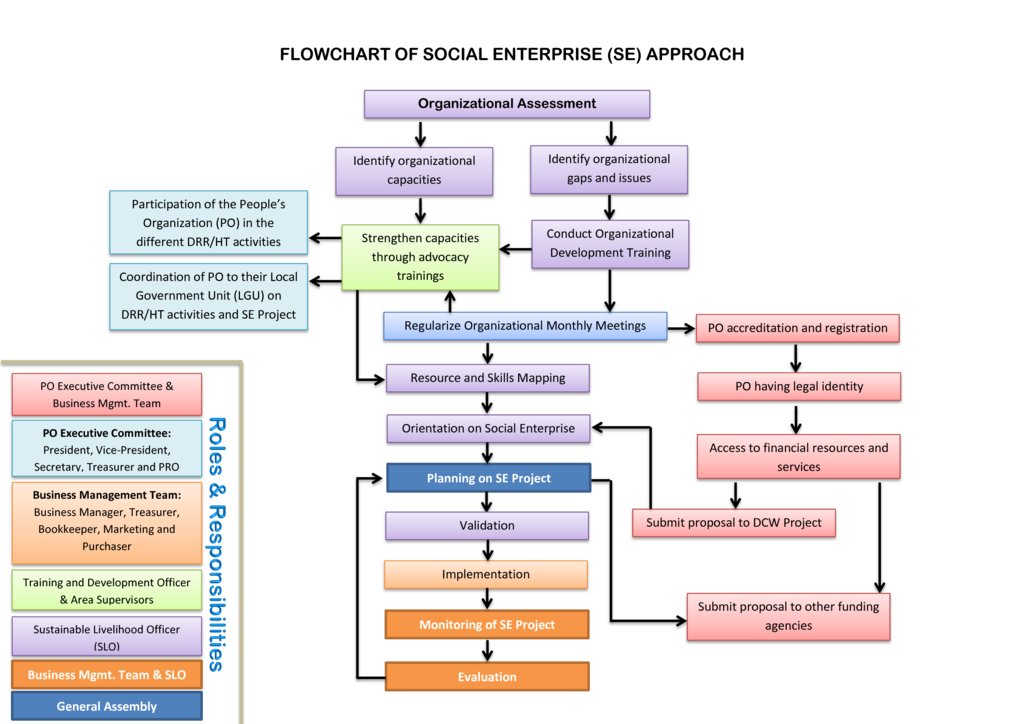Social Enterprise (SE) [Филиппины]
- Создание:
- Обновить:
- Составитель: Keeshia Lynn Marie Austria
- Редактор: –
- Рецензент: Alexandra Gavilano
Katilingbanong Patigayon
approaches_3119 - Филиппины
Просмотреть разделы
Развернуть все Свернуть все1. Общая информация
1.2 Контактные данные специалистов и организаций, участвующих в описании и оценке Подхода
Ответственный (-ые) специалист (-ы)
Sustainable Livelihood Officer (SLO):
Филиппины
Название проекта, содействовавшего документированию/оценке Подхода (если применимо)
Danajon Communities WATCH ( DCW)Название организации (-ий), содействовавших документированию/оценке Подхода (если применимо)
Philippine Partnership for the Development of Human Resoruces in Rural Areasy (PhilDHRRA) - Филиппины1.3 Условия, регламентирующие использование собранных ВОКАТ данных
Когда были собраны данные (на местах)?
04/04/2017
Составитель и ответственный/-ые специалист(-ы) согласны с условиями, регламентирующими использование собранных ВОКАТ данных:
Да
1.4 Ссылка (-и) на Анкету (-ы) по Технологиям УЗП

Artificial Reef [Филиппины]
Artificial Reef is a fish aggregating device that is considered as a sustainable alternative in the islands of Bohol. This technology can withstand the effects of gale warning, typhoons and extreme heat.
- Составитель: Keeshia Lynn Marie Austria
2. Описание Подхода УЗП
2.1 Краткое описание Подхода
Social Enterprise (SE) aimed to provide social protection among its members and generate additional family income. Above all, this approach will encourage the conservation, preservation and protection of the resources available in the community.
2.2 Подробное описание Подхода
Подробное описание Подхода:
Social Enterprise (SE) materialized because of the experiential processes conducted by the Sustainable Livelihood Officer. According to him, livelihood intervention should achieve the advocacy of the project, at the same time, relevant and suitable to the people living in the island and coastal communities. SE Approach was a result of the focus group discussions conducted in the community and livelihood consultations of the different stakeholders in the barangay level. According to the Local Government Code of the Philippines, Book III, Section 386 (a), A Barangay maybe created out of a contiguous territory which has a population of at least two thousand (2,000) inhabitants as certified by the National Statistics Office. Furthermore, Section 386 states that barangay is the basic political unit. It serves as the primary planning and implementing unit of government policies, plans, programs, projects, and
activities in the community, and as a forum wherein the collective views of the people may be expressed, crystallized and considered, and where disputes may be amicably settled.
Social Enterprise Project was determined using the following methods: resource mapping, identification of social enterprise project, planning and preparation which includes community equity fund, implementation, maintenance and monitoring, lastly, expansion and/or diversification of the implemented project. Once the enterprise is established, the organization will elect the members of their business management team. This is different from the set of officers typically present in every organization because business management team will focus on the business engagements only. The business management team is headed by the business manger, who will report directly to the president of the organization. The members of the team includes the following: treasurer, bookkeeper, purchaser and marketing team (if needed by the enterprise project).
The management team will receive 20% of the net income. Afterwards, the remaining net income will be divided according to the following percentage: 10% for disaster fund allocation, 10-20% for additional capital, and the remaining amount is allocated for individual member share. SE does not only focus on net profit but also the welfare of the community, its resources and social protection among its members. Social protection specifically means having disaster fund allocation per organization which is derived from the net income of the enterprise. This fund can be utilized by the organization before or after the onset of a disaster, depending on their agreed utilization guidelines. The sustainability components are the following: allocation for additional capital, depreciation cost for every equipment and experiential mentoring of the Livelihood Officer.
Based from the baseline study of DCW Project, Human Trafficking cases increased after a disaster. DCW project aimed to build resilient communities in order to combat Human Trafficking, however, conducting awareness sessions, coordination meetings with the local government unit and establishing HT referral system is not enough to prevent Human Trafficking. On the second year of the project, the project management team realized that livelihood component is the missing link in fighting against Human Trafficking. The body agreed that sustainable livelihood project means being adaptable and resilient to climate change. For the livelihood officer, group enterprise is an important mechanism in promoting adaptable and resilient livelihood project. This approach was granted to the People's Organization (PO) in the barangays who were organized or adopted by DCW project.
Due to the awareness sessions conducted, the organizations were motivated to join the advocacy activities like coastal clean-up and mangrove planting. They were also invited to join forums on the Solid Waste Management (SWM), referral pathway on Human Trafficking (HT) and awareness training on the causes and effects of Climate Change and sea level rise, since they are living in the island and coastal barangays. PO organizations serve as community partners of DCW project in facilitating learning sessions in the different barangays. Furthermore, DCW project provided inputs how to make their enterprise resilient and sustainable by being adaptive to the changing weather especially those organizations living in the island barangays.
2.3 Фотографии, иллюстрирующие Подход
2.5 Страна/ регион/ место, где применялся Подход
Страна:
Филиппины
Административная единица (Район/Область):
Province of Bohol
Map
×2.6 Даты начала и окончания реализации Подхода
Год начала реализации:
2016
Если год начала реализации Подхода достоверно неизвестен, дайте примерную оценку:
менее 10 лет назад (недавняя)
Комментарии:
The Social Enterprise project of the different organizations are currently ongoing.
2.7 Тип Подхода
- в рамках проекта/ программы
2.8 Каковы цели/ задачи Подхода
Social Enterprise (SE) aimed to provide social protection among its members and generate additional family income. Above all, this approach will encourage the conservation, preservation and protection of the resources available in the community.
2.9 Условия содействующие применению Технологии/ Технологий в рамках Подхода или затрудняющие его
Социальные/ культурные/ религиозные нормы и ценности
- содействуют
Membership of the organization encouraged multi stakeholder participation.
Наличие/ доступность финансовых ресурсов и услуг
- содействуют
The People's Organization (PO) can easily access financial resources and services if they were already established and registered by the different government agencies. One of the determinants of the capability of the PO is having annual financial statement, minutes of the organizational meetings and resolutions made by the organization.
- затрудняют
Having a weak or inactive People's Organization. If the PO does not comply the necessary requirements of the different government agencies and inactive in the different organizational activities, then, they will have difficulty in accessing funds.
Институциональные условия
- содействуют
It will facilitate to address the needs of the organization like capacity building, technical assistance and financial support.
- затрудняют
The bureaucratic procedures and priorities of every institution.
Сотрудничество/ координация действий
- содействуют
It will make the decision-making process participatory and according to the needs of the majority.
Нормативно-правовая база (землевладение, права на земле- и водопользование)
- содействуют
This approach specifically refers to Coastal Resource Management (CRM). The project implementer, People's Organization (PO) and the CRM officer already had partnership. Moreover, the PO representative is one of the members of CRM council to ensure legal identity of the Social Enterprise projects.
Программные документы/ руководящие установки
- содействуют
It will give directions and set the standards of the organization.
- затрудняют
If the policies mandated were not agreed by the majority.
Рынки (для приобретения материалов и услуг, продажи продукции) и цены
- содействуют
The People's Organization (PO) already established linkage to the different markets.
- затрудняют
The quality of product expected by the buyers is not met by the People's Organization.
Объем работ, доступность рабочей силы
- содействуют
DCW Project provided Social Enterprise (SE) guidelines for business operation, financial management and monitoring of enterprise.
3. Участие и распределение ролей заинтересованных сторон
3.1 Заинтересованные стороны, участвующие в реализации Подхода и их роли
- организации местных сообществ
People's Organization
The implementer and beneficiary of the project.
- эксперты по УЗП/ сельскому хозяйству
Sustainable Livelihood Officer: Male, 59 years old
Facilitates the implementation of the SE projects and provides technical assistance to the PO and project staff.
- местные власти
Municipal and barangay local government unit
Support system through legislation and resolution that adheres the needs of the PO.
3.2 Участие местных землепользователей/ местных сообществ на разных стадиях реализации Подхода
| Участие местных землепользователей/ местных сообществ | Перечислите участников и опишите их вовлеченность | |
|---|---|---|
| инициирование/ мотивация | интерактивное | PO members, Sustainable Livelihood Officer, Field Officers, Area Supervisors and representative of the barangay council. Activity: FGD, resource mapping, consultations and assessment of the organizations capability in handling social enterprise project. |
| планирование | интерактивное | PO members, Sustainable Livelihood Officer, Field Officers, Area Supervisors and representative of the barangay council |
| выполнение | самоорганизация | PO members, Sustainable Livelihood Officer, Field Officers and Area Supervisors |
| мониторинг/ оценка | самоорганизация | PO members, Sustainable Livelihood Officer and Field Officers |
3.3 Схема реализации (если имеется)
Описание:
Capacity building on Disaster Risk Reduction (DRR) and Human Trafficking (HT) is integrated in this approach so that PO members will have greater appreciation on the preservation, conservation and protection goal of SE approach. The Sustainable Livelihood Officer (SLO) served as facilitator and guide of the PO in strengthening their organization and implementing their enterprise. He will also provide technical assistance, conduct coaching and mentoring sessions within the project term. Frequency of monitoring will depend on the nature of their SE project.
Автор:
Guillermo P. Bagacay
3.4 Принятие решений по выбору Технологии/ Технологий УЗП
Укажите, кто принимал решение по выбору применяемой Технологии/ Технологий:
- все участники как часть процесса совместных действий
Поясните:
Focus Group Discussion (FGD) and livelihood consultations in the barangay level were conducted by the livelihood officer in order to achieve a feasible and suitable Social Enterprise project specific for their community. After leveling off and the exchange of ideas based from their previous experience vis-a-vi the current trend of the weather patterns and climate change, the organization finally arrived to a conclusion and implement their desired social enterprise project.
Поясните на чём было основано принятие решений:
- личный опыт и мнения (незадокументированные)
4. Техническая поддержка, повышение компетенций и управление знаниями
4.1 Повышение компетенций/ обучение
Проводилось ли обучение землепользователей/ других заинтересованных лиц?
Да
Укажите, кто проходил обучение:
- землепользователи
Тип обучения:
- опытные участки
Тип обучения:
- On-site coaching and mentoring
Рассматриваемые темы:
1) Technical Assistance in drafting proposals and lobbying
2) Financial Recording and Bookkeeping
3) Value Chain Analysis
4) Enterprise Development
5) Occupational Health and Health Standards
4.2 Консультационные услуги
Есть ли у землепользователей возможность получать консультации?
Да
Укажите, где именно оказываются консультационные услуги:
- на полях землепользователей
4.3 Институциональная (организационная) поддержка
В ходе реализации Подхода были ли организованы новые институциональные структуры или поддержаны уже существующие?
- да, умеренно
Укажите уровень, на котором структуры были укреплены или вновь созданы:
- местные
Опишите организацию, функции и ответственность, членство и т.д.
Some of the members of the organization are capacitated to become local champions. Local champions means they have the ability to facilitate learning sessions, actively involved in organizational activities and empowered enough to link and lobby with the different line agencies. While the leaders of the organization are trained to manage their organizations and social enterprise.
Укажите тип поддержки:
- финансовая
- повышение компетенций/ обучение
- Seed Capital worth Php30,000
4.4 Мониторинг и оценка
Являются ли мониторинг и оценка частью Подхода?
Да
Если да, будет ли данный документ использоваться для мониторинга и оценки?
Нет
4.5 Научные исследования
Были ли научные исследования частью Подхода?
Нет
5. Финансирование и внешняя материальная поддержка
5.1 Годовой бюджет мероприятий по УЗП в рамках Подхода
Если точный годовой бюжет неизвестен, укажите примерный диапазон затрат:
- 2000-10000
Комментарий (например, основные источники финансирования/ ключевые доноры):
DCW Project is funded by Caritas Switzerland and JTIF
5.2 Финансирование и внешняя материальная поддержка, предоставляемая землепользователям
Предоставлялась ли землепользователям финансовая/ материальная поддержка для применения Технологии /Технологий?
Нет
5.3 Субсидии на отдельные затраты (включая оплату труда)
- нет
Если труд землепользователя был существенным вкладом, укажите, был ли этот вклад:
- добровольный
5.4 Кредитование
Предоставлялись ли в рамках Подхода кредиты на мероприятия УЗП?
Нет
5.5 Другие методы или инструменты стимулирования
Использовались ли другие методы или инструменты стимулирования для продвижения Технологий УЗП?
Нет
6. Анализ влияния и заключительные положения
6.1 Влияние Подхода
Сумел ли Подход расширить возможности местных землепользователей, повысить участие заинтересованных сторон?
- Нет
- Да, немного
- Да, умеренно
- Да, существенно
SE approach integrates the lesson learned from their experience during Typhoon Haiyan and Bohol earthquake and sustainability measures of the community. This approach is localized to ensure that the project is suitable and adaptable to their respective communities.
Сумел ли Подход дать возможность принимать решения на основе подтвержденных фактов?
- Нет
- Да, немного
- Да, умеренно
- Да, существенно
Yes because the planning process was represented by the different stakeholders in the barangay.
Сумел ли Подход помочь землепользователям внедрить и поддерживать технологии УЗП?
- Нет
- Да, немного
- Да, умеренно
- Да, существенно
Yes because the approach serves as guide from planning to implementation and monitoring of the project.
Сумел ли Подход расширить знания и возможности землепользователей в применении практик УЗП?
- Нет
- Да, немного
- Да, умеренно
- Да, существенно
Yes because the PO members are now financial literate and underwent series of financial coaching and mentoring sessions.
Сумел ли Подход расширить возможности социально и экономически уязвимых групп?
- Нет
- Да, немного
- Да, умеренно
- Да, существенно
Yes because the women, senior citizens and persons with disability are members of the organization.
Сумел ли Подход содействать гендерному равенству и расширить права и возможности женщин и девочек?
- Нет
- Да, немного
- Да, умеренно
- Да, существенно
Yes because every member has their shared efforts.
trainings provided and linkage to different government agencies
Сумел ли Подход улучшить способность землепользователей адаптироваться к изменениям климата и смягчать последствия катастрофических погодных явлений?
- Нет
- Да, немного
- Да, умеренно
- Да, существенно
It is because the goal of the approach is to establish sustainable social enterprise that can adapt to climate change especially that they are living in the island and coastal barangays of Bohol, Philippines.
Сумел ли Подход привести к созданию новых рабочих мест/ к расширению возможностей получения дохода?
- Нет
- Да, немного
- Да, умеренно
- Да, существенно
Resource-based projects needs additional manpower during harvest.
6.2 Основные причины, побуждающие землепользователей внедрять УЗП
- рост продуктивности
Establish resilient and suitable enterprise in their respective communities.
- снижение риска катастрофических погодных явлений
By means of allocating disaster funds and adaptability measures of the enterprise as part of its sustainability plan.
- приобретение знаний и опыта в области УЗП
This is a livelihood approach that does not just focus on profit but also on social awareness and climate change adaptation.
6.3 Долгосрочная устойчивость мероприятий в рамках Подхода
Могут ли землепользователи самостоятельно (без внешней поддержки) продолжать применение того, что было реализовано в рамках Подхода?
- нет уверенности
Если нет или нет уверенности, объясните почему:
Because the dynamics within the organization is a vital factor in sustainability. The role of a second liner of the key positions and business management team is crucial as well since they are involve in the technical support and business processes.
6.4 Сильные стороны/ преимущества Подхода
| Сильные стороны/ преимущества/ возможности по мнению землепользователей |
|---|
| This is not an individualistic approach but a group effort in order to revive the "bayanihan" spirit (spirit of communal unity, work and cooperation to achieve a particular goal) and social awareness. |
| The People's Organization (PO) members underwent training like financial management, Value Chain Analysis (VCA), Occupational Safety and Health Standards (OSHS). What made this approach different from their previous livelihood projects is that, the PO were guided from planning to implementation and monitored on a monthly basis to ensure the continuity of their business engagement. Also, there were mentoring and coaching sessions provided by the livelihood officer and consultant on financial recording and bookkeeping. |
| The PO learned that it is not only about the quality of output, rather, the quality starting from its source to production and marketing. Moreover, its impact on their environment and community. |
| Сильные стороны/ преимущества/ возможности по мнению составителя или других ключевых специалистов |
|---|
| This approach will not only focus on profit but also on environmental protection, conservation and preservation. |
| Increase fish production because it will lessen the pressure of their usual fishing ground and minimize over fishing. |
| Alternative source of income to the fishers especially if there's gale warning and typhoons. |
6.5 Слабые стороны/ недостатки Подхода и пути их преодоления
| Слабые стороны/ недостатки/ риски по мнению землепользователей | Возможные пути их преодоления/снижения? |
|---|---|
| Turn over of Business Management Team especially the bookkeeper position because it is time demanding and keen on details. |
Choose a bookkeeper that is willing enough to follow through the records and no problem on his/her eye sight. Encourage and train second liner on the key positions. Provide honorarium to the business management team. |
| Security of tenure (land/sea) of their project site or production building. |
To enter a Memoramdum of Agreement (MOA) between the local government units. Lobbying in the local government unit to pass a resolution allowing the PO to use the land/sea as project site or production building. |
| Sustainability of the project even after DCW. |
The project holder will enter a Memorandum of Agreement (MOA) between the local government unit as partners of the community in sustaining their project. Provided technical skills training to the PO so that they can mange their enterprise even after DCW project. Ensure registration and accreditation of the POs in the different committees of the local government unit and different government agencies. |
| Слабые стороны/ недостатки/ риски по мнению составителя или ответственных специалистов | Возможные пути их преодоления/снижения? |
|---|---|
| 2 years and 9 months is not enough to mold a strong and dynamic community-based social enterprise. | Linkage to the Local Government Unit (LGU) and the different line agencies like Department of Trade and Industries (DTI), Bureau of Fisheries and Aquatic Resources (BFAR) and Department of Science and Technology (DOST). |
| Upgrading of the People's Organization (PO) knowledge on production technology, marketing and product packaging. | Linkage to the different line agencies like Department of Trade and Industries (DTI), Bureau of Fisheries and Aquatic Resources (BFAR) and Department of Science and Technology (DOST) because they have the expertise to support the needs of the PO. For example, DTI for marketing and linkage and DOST for product development. |
| Capacity to access funds from the different line agencies and fund donors. | Train the PO to conceptualize a project based from their needs, write project proposals and submit it to the concern agencies for funding. |
7. Справочные материалы и ссылки
7.1 Методы сбора/источники информации
- выезды на места, полевые обследования
along with monthly monitoring visits and Occupational Safety and Health Standards (OSHS)
- опросы землепользователей
two respondent per organization
Ссылки и модули
Развернуть все Свернуть всеСсылки

Artificial Reef [Филиппины]
Artificial Reef is a fish aggregating device that is considered as a sustainable alternative in the islands of Bohol. This technology can withstand the effects of gale warning, typhoons and extreme heat.
- Составитель: Keeshia Lynn Marie Austria
Модули
Нет модулей


